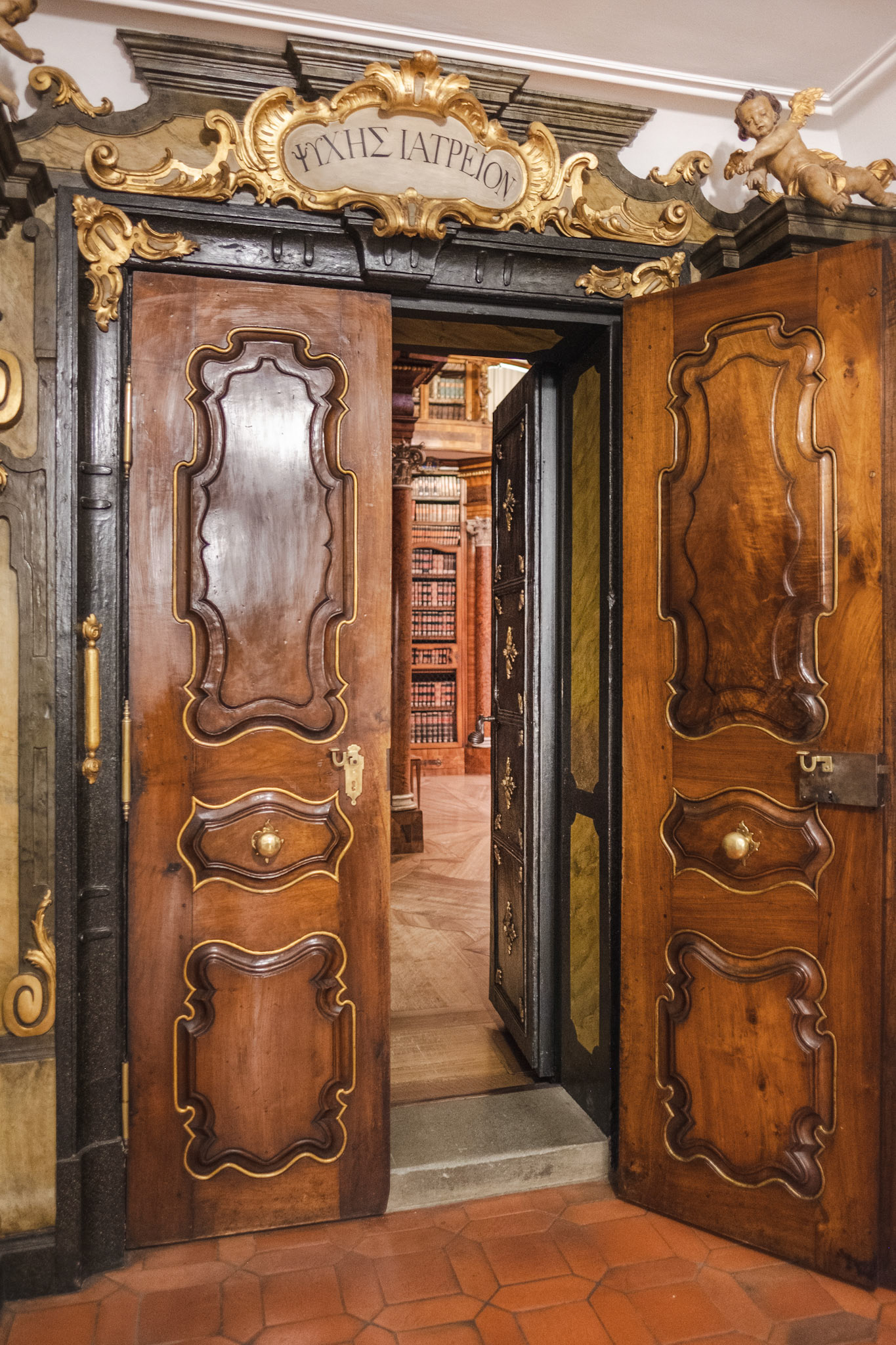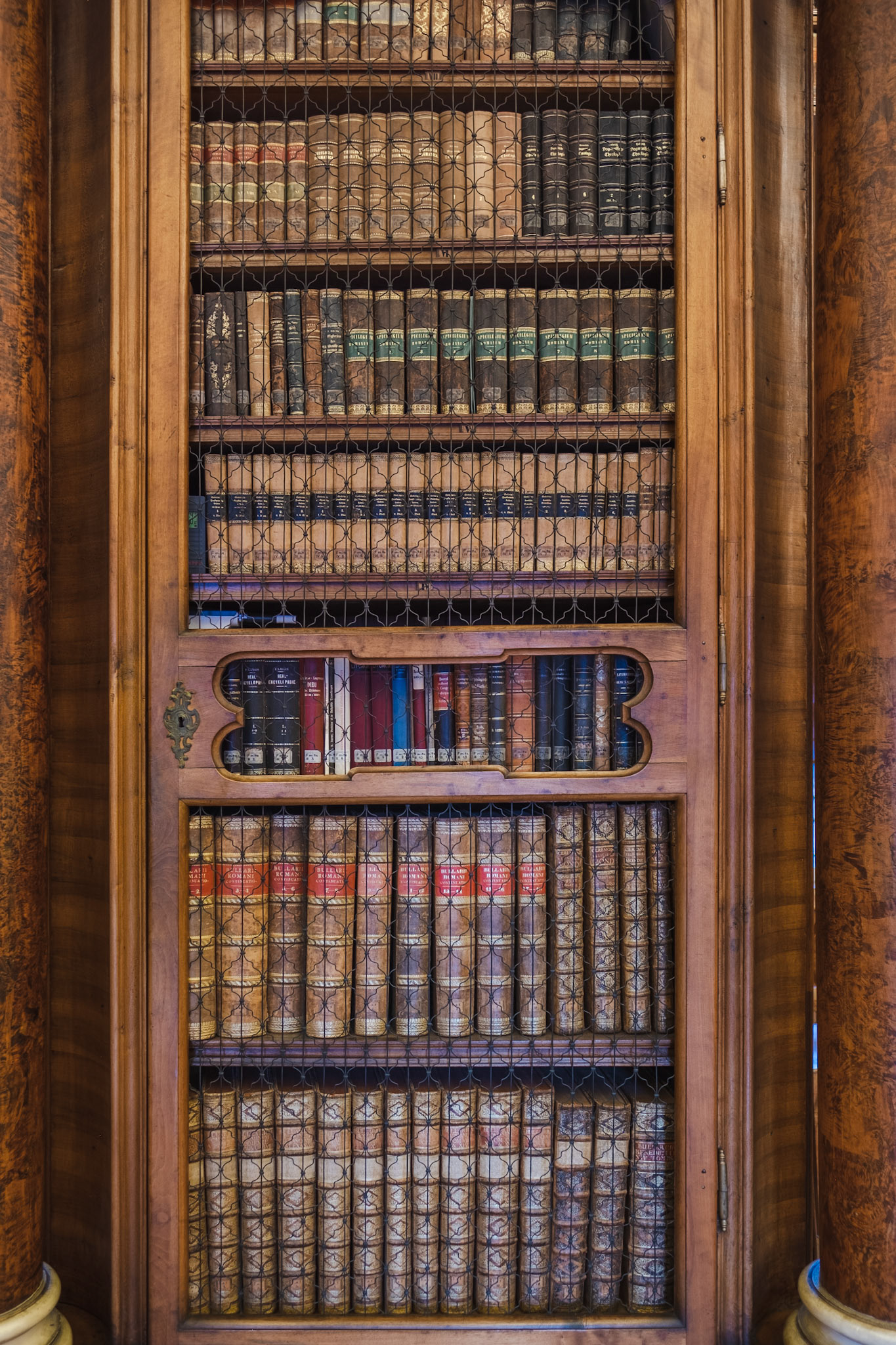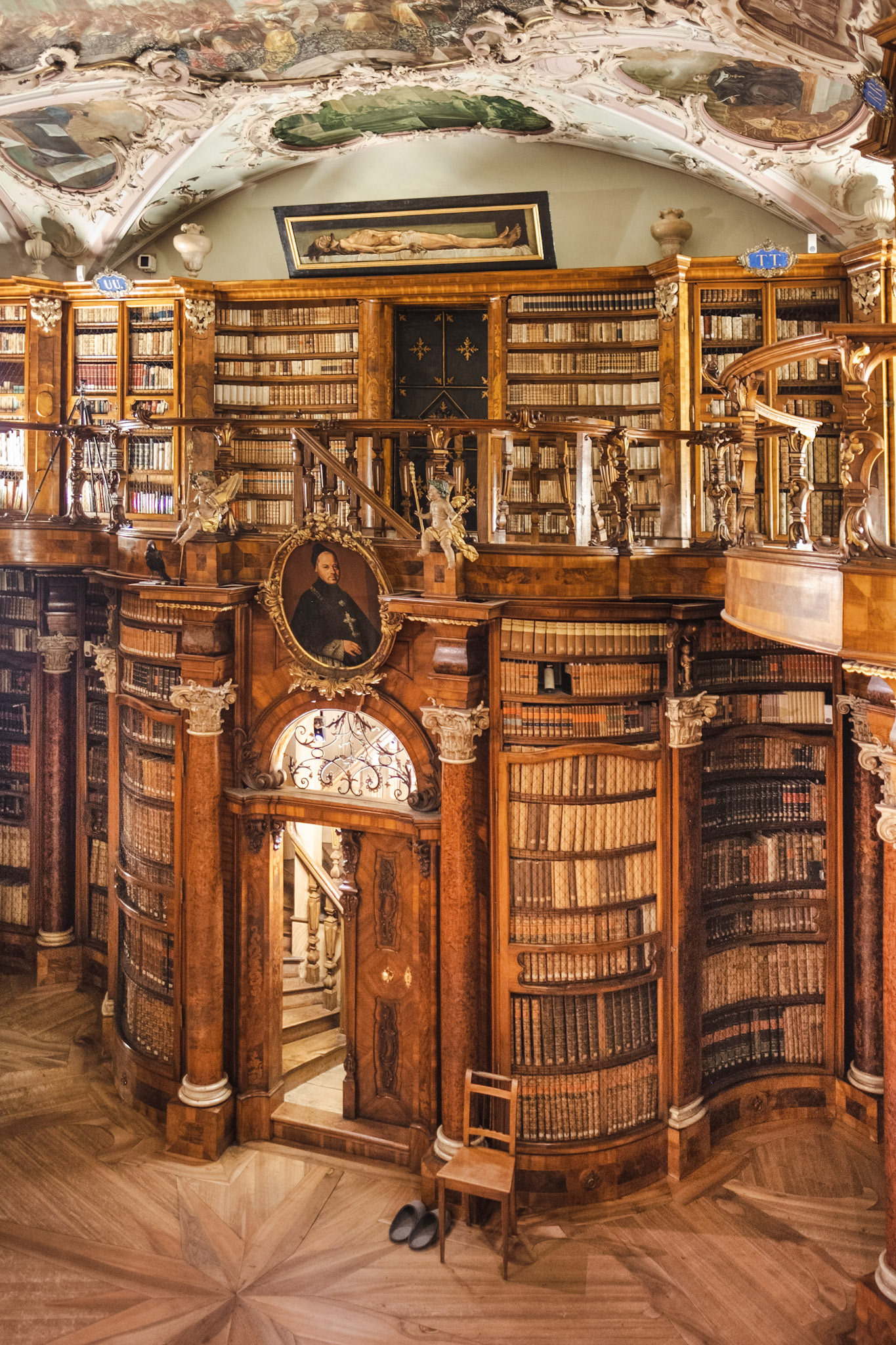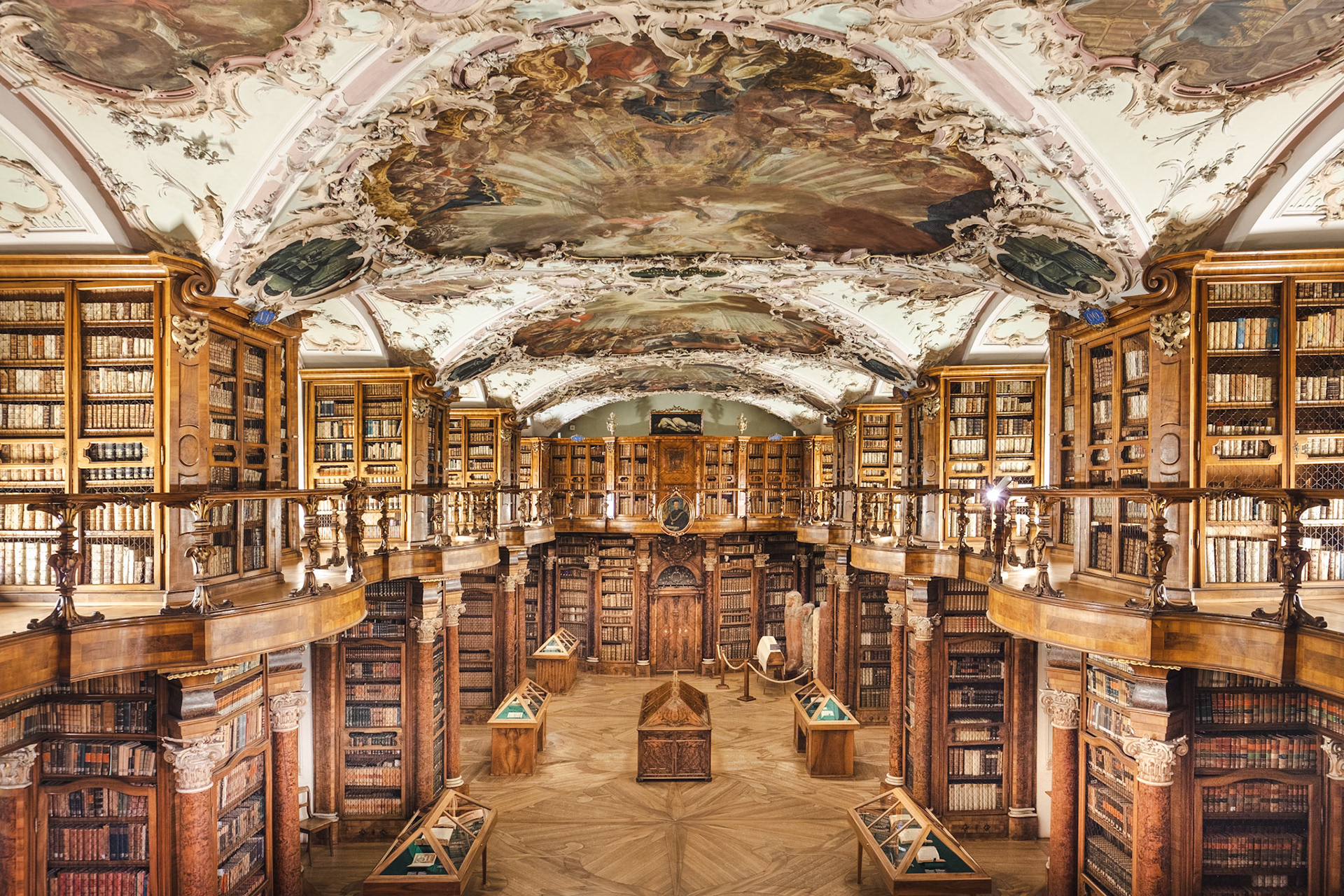In the Middle Ages, the St. Gallen abbey developed into one of Europe's most important intellectual centres, the manuscripts in its library inspiring scholars from all over the continent. The abbey library was designed by Peter Thumb in the Rococo style and built between 1758 and 1762. It holds manuscripts dating back to the 8th century and, a part of the St. Gallen abbey district, has been recognized as a World Heritage Site in 1983.
Above the entrance door a pair of cherubs holds a sign with a greek inscription translating to "soul's pharmacy". The two-story rectangular library hall contains a surrounding gallery at half height. The bookshelves are manufactured from walnut and cherry wood.

entrance with inscription "soul's pharmacy"

surrounding gallery at half height

Stiftsbibliothek St. Gallen
30000 of the library's collection of 170000 books are shown in the library. Among its many treasures are the Regula Benedicti from around 820 (Codex Sangallensis 914) and manuscript B of the Nibelungenlied from 1260 (Codex Sangallensis 857). The book titles on the spines of the volumes are clearly visible through the finely latticed shelves. A copy of the painting "Leichnam Jesu im Grab" by Hans Holbein was probably made in the 17th century and is installed on one of the walls.

bookshelf

bookshelf

Stiftsbibliothek St. Gallen
Surprisingly, the library also contains an Egyptian mummy. Shepenese lived from 672 to 525 BC and was buried in the Deir el-Bahri Temple Complex. Her mummy and two wooden sarcophagi were given as a gift to the mayor of St Gallen in 1820.
